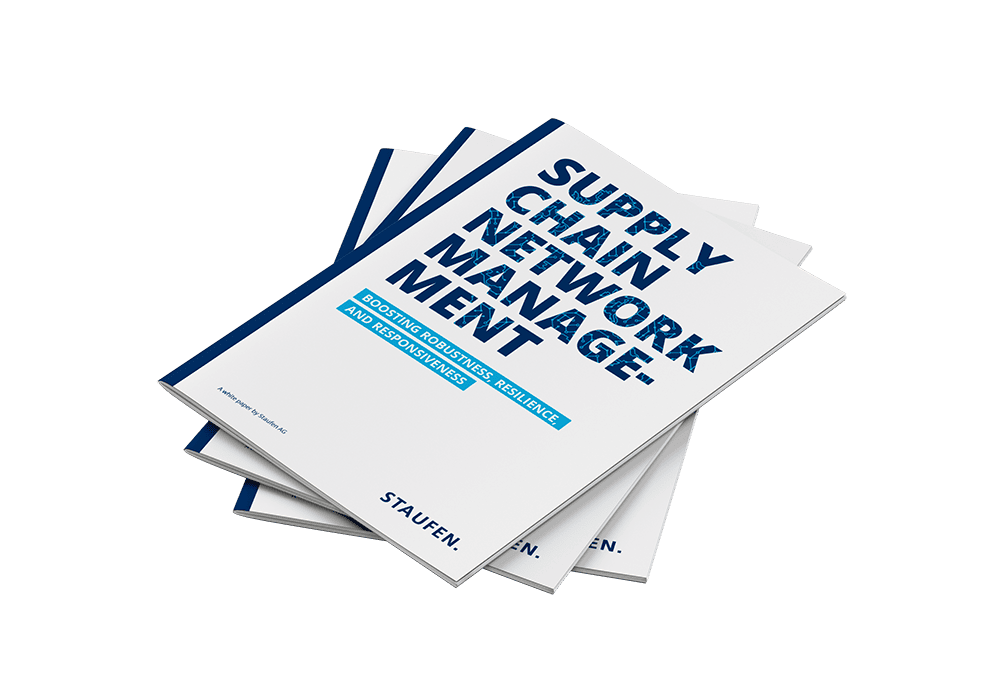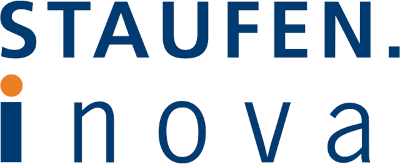
White paper Supply Chain Network Management 2023
Boosting Robustness, Resilience and Responsiveness
What does the stable supply chain network of tomorrow look like? Those who come out on top will be supply chain networks that at their core have three capabilities: Robustness, responsiveness and resilience.
All reconfiguration measures are geared towards strengthening these three capabilities. Companies then benefit from the fact that a robust network has suitable measures in place to protect them against events with a lower severity and enables continuous operation. The more responsive the network is, the quicker the company is capable of making suitable adjustments and to continue with the performance.

Thomas Spiess
Senior PartnerSTAUFEN.INOVA AG
Thomas Spiess has diverse industry knowledge in the precision industry, luxury consumer goods, and textile and fashion sectors. In addition to many years of project management and leadership experience in the field of global supply chain management, Thomas Spiess also brings many years of experience from challenging global supply chain projects. Among other things, he was responsible for the conception and development of a European bonded warehouse with optimization of inbound and outbound transports, production relocations from Western to Eastern Europe and to Asia with an optimization of the production and sourcing network. Thanks to his extensive international leadership and facilitation experience, Thomas Spiess also achieves very good results with intercultural teams. Since the end of 2015, Thomas Spiess has been working as a consultant at Staufen.Inova AG.
Translated with www.DeepL.com/Translator (free version)
What does the stable supply chain network of tomorrow look like?
The white paper illustrates the future challenges and requirements of the value creation network, addresses specific dimensions of successful supply chain network management, explains the need for a risk management and shows how companies can achieve a successful network in 5 steps.
In the past, the goals were almost exclusively the classic “competitive priorities” – costs, time, flexibility, quality and innovation. Now, robustness and resilience are at the top of the list.
Prof. Dr. Thomas Friedli
University of St. Gallen (HSG), Institute for Production Management
Supply Chain Network Management Framework
This is why the Staufen supply chain network management approach focuses on the dimensions of robustness, responsiveness, and resilience alongside the classic performance criteria, showing how the loss zone can be kept to a minimum and a rapid return to a normalized performance level can be achieved.
All terms and explanations of our SCNM framework can be found in our SCNM glossary.
Key Lessons
- The current supply chain shortages will continue to affect the economy for some time to come and will continue to cause delays throughout the value creation networks and cost increases in the industry.
- Companies need to respond more quickly to disruptions in the network and in raw material and energy supplies if they are to be better equipped to meet future challenges.
- Classic supply chain management is not sufficiently equipped to manage increasingly complex networks and ensure transparency along all processes and resources on all levels.
- State-of-the-art supply chain network management improves network performance by helping to align the individual segments across functions.
- Introducing a supply chain risk management ensures the ability to detect potential risks early and to strengthen network resilience.
- A well performing network helps companies to increase their competitive advantage.
Would you like to learn more? Request the white paper now free of charge!
Your Experts for Supply Chain Network Management
Do you want your company to be able to be robust, resilient and respond quickly to increasingly new requirements? Our consultants look forward to speaking with you in person and working with you!

Thomas Spiess
Member of the Executive Board
STAUFEN.INOVA AG
Phone: +49 7024 8056 0
Mail: kontakt@staufen.ag

Thomas Spiess
Member of the Executive BoardSTAUFEN.INOVA AG
Thomas Spiess holds a degree in Industrial Engineering (ETH Zurich), completed an MM Program at IMD Lausanne and is now a Senior Manager and Trainer at Staufen.Inova. He has extensive experience as an executive and senior consultant in the area of supply chain management with in-depth industry knowledge in the precision industry and the luxury consumer goods, textile and fashion industries. He has expert knowledge of complex global supply chain projects and concepts. He is also an accomplished moderator, trainer and coach.
Thomas Spiess has been in charge of projects for the overall optimization of international supply chains and is an expert in supply chain network management and sales & operations planning.
REQUEST THE WHITE PAPER NOW AS A DIGITAL VERSION

More about Supply Chain Network Management

What must future supply chain management be capable of?
Innovative supply chains are characterized by strong customer orientation, excellent performance, and high flexibility and agility in the face of new market and environmental requirements. If the supply chain is transformed from a cost factor to a success factor, it can become an integral part of the competitive strategy. Thomas Spiess is a Member of the Management Board of STAUFEN.INOVA AG in Switzerland. He studied mechanical engineering at ETH Zurich and has been an expert for supply chain management for almost 30 years.
Read more
The future of supply chains
Ole Trumpfheller from DB Schenker is convinced: customers and service-providers must adopt a collaborative approach to guarantee a secure and scheduled movement of goods in the future.
Read more


